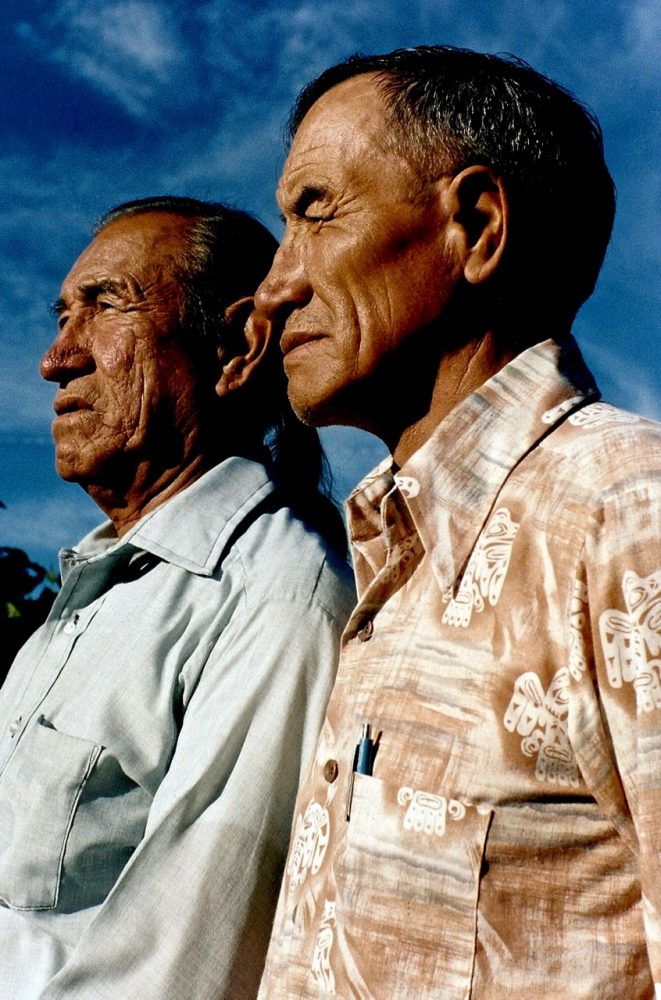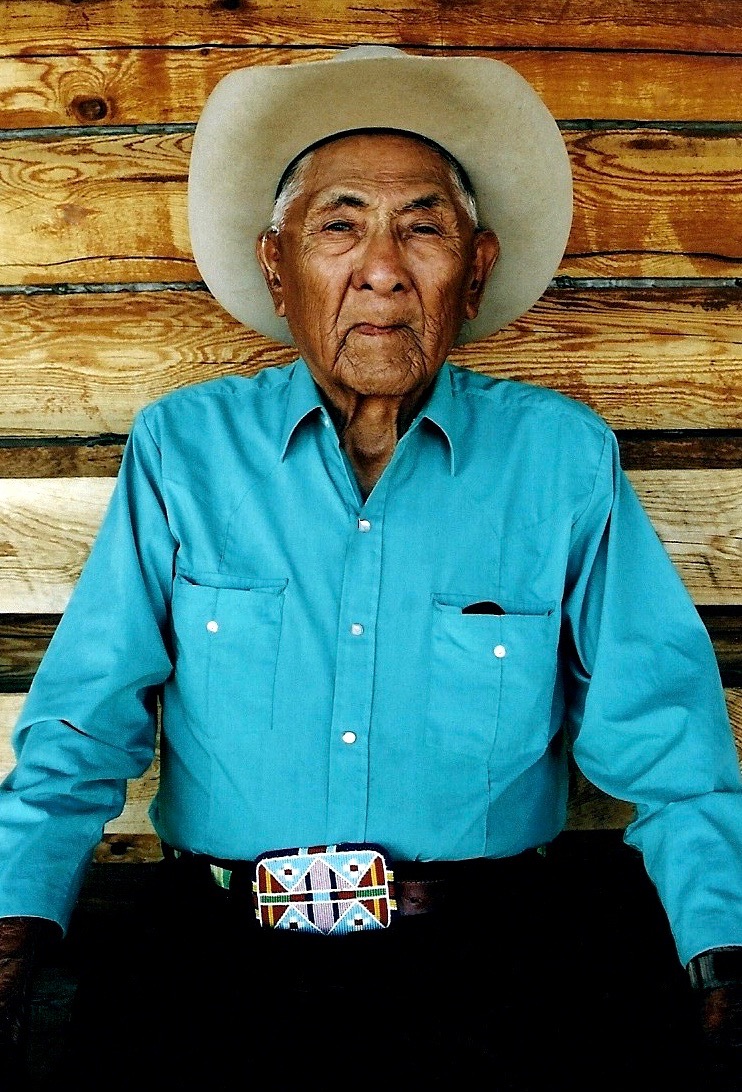Trust: The Key to Thoughtful Images
by Rob Inder-Smith
Independent Review, Sydney, New South Wales, Australia, 2012.
Sweeps of history and of a people bowed but not broken are seldom captured as compellingly in photograph as they are by Andrew Hogarth. For more than thirty-two years, Hogarth’s lenses have been preserving images of an ignoble past and of they who remain to remind the world of its heroes. Sadly they also remind it of man’s brutality and murderous nature. The seldom smiling and now famous faces still reflect glory and heartbreak. At the same time, they compose all that is serene and triumphal and it is these, along with irresistible shots of the still and vast American mid-west, that have been immortalised so skilfully by Hogarth.
In the cowboy matinees he used to watch as a boy growing up in Scotland, his subjects were the “redskins.” Today, their frequently painted faces and spectacular headdresses comprise the bulk of an oeuvre that has made the independent artist/publisher one of the foremost historians of the Plains Indian. Hogarth’s growing volumes of text present with authority and a cogence that has complimented his pictorial essays so well for so long. His is a starkly beautiful panoply of stories, insights, personal commentaries, landscapes, landmarks, monuments, battlefields, names and faces that encapsulate the unsettling truth besmirching native American culture.
Despite the travails of their ancestors, Hogarth’s subjects radiate dignity, and pride has always been there: omnipresent and undeclared. It is something else undeclared, however, that has been so important in the photographer’s endeavours – the undeclared skill of winning trust. This “intangible” and rare gift is, perhaps, the key to Hogarth’s success, and has helped elevate his writings and photos into a class of their own. Indeed, they command great respect among the very people he has collaborated with and come to know so well over the last three decades.
Without trust, the likes of Jack Little, Frank Fools Crow, John Sipes Jr, Daniel Long Soldier, Francis and Cerise Stewart, Joe Medicine Crow, Pius Real Bird, Tommy Christian, Jared Brown and Calvert Dixon would never have allowed Hogarth to befriend them, nor let his camera do its majestic work. Without trust, stories of the legendary Indian warrior chiefs of the late 19th century, Sitting Bull, Crazy Horse, Big Foot, Medicine Water and Little Wolf, would never have been given new impetus and scope in Hogarth’s modern-day compendiums of stunning books and cyberspace. Each entry is a triumph and just one more modest tribute to a way of life that shames the reader’s own era. Hogarth has stepped as close to the maelstrom as one can get without being pulled into its life-upending vortex. He has swooped in an instant, time after time, and brought back to the western world a lesson for the feckless, an inspiration to the dispirited, and a beacon for the brave.
Great battles at Little Bighorn and the Wounded Knee debacle will never be allowed to die among descendants of the people who were there. Thanks to Hogarth’s retelling’s, they now reach a vastly wider audience who might develop the same sense of wonder and adventure that took him on repeated self-funded peregrinations across the United States of America. With him went his camera and notebook – and of course, an undeclared ability to win another person’s trust.



